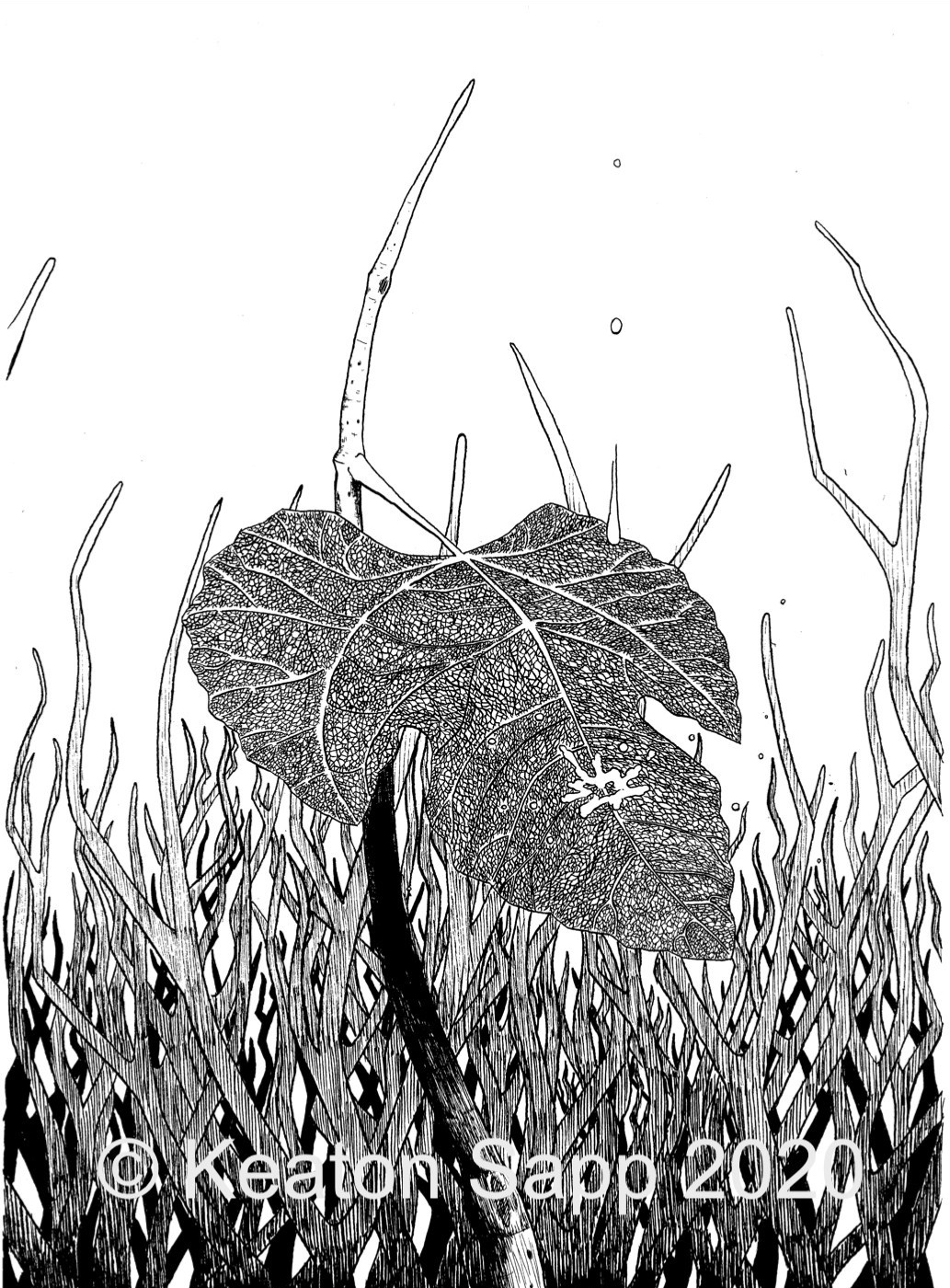Grace Kernersville is very fortunate to have artist, Keaton Sapp contributing artwork to this Lent’s art exhibit, The Stations of the Cross. Grace will make use of the exhibit to offer an opportunity for people to walk the Stations on Good Friday and Holy Saturday in April. In the meantime, I’d like to offer you another opportunity for you to reflect as you mark the season and prepare for the celebration of Jesus’ resurrection.
With previous exhibits in which we have hung seasonal art in the Grace Gallery, we have made use of ekphrasis which is writing that responds to a specific piece of art be it prose or poetry. Most recently Grace’s Advent exhibit, The Jesse Tree, made use of this sort of writing. Over the next five weeks, I will be posting the art for you to meditate and reflect on in order for you to write a response. I will include a few words about the art and provide a scriptural context for it. The artwork itself is somewhat abstract. In a desire to avoid making an image of Jesus and be a stumbling block to some, the artist is using the motif of a fig tree. The series will tell the story of fig tree, but through those pictures you should be able to discern the story of Jesus’ last day.
This week’s piece is entitled, “The Anointing” and is based on Matthew 26:6-16 which reads,
Now when Jesus was at Bethany in the house of Simon the leper, 7 a woman came up to him with an alabaster flask of very expensive ointment, and she poured it on his head as he reclined at table. 8 And when the disciples saw it, they were indignant, saying, “Why this waste? 9 For this could have been sold for a large sum and given to the poor.” 10 But Jesus, aware of this, said to them, “Why do you trouble the woman? For she has done a beautiful thing to me. 11 For you always have the poor with you, but you will not always have me. 12 In pouring this ointment on my body, she has done it to prepare me for burial. 13 Truly, I say to you, wherever this gospel is proclaimed in the whole world, what she has done will also be told in memory of her.” 14 Then one of the twelve, whose name was Judas Iscariot, went to the chief priests 15 and said, “What will you give me if I deliver him over to you?” And they paid him thirty pieces of silver. 16 And from that moment he sought an opportunity to betray him.
In this passage, Matthew juxtaposes two events prior to the last events of Jesus’ earthly ministry. Those last events begin with the inauguration of the Lord’s Supper on Holy Thursday and continues with his watchful prayer in the Garden of Gethsemane followed by his arrest, trial, crucifixion, and death on Good Friday.
It may be unsurprising to us in this day and age, but the two prior events in Matthew 26 seemed to be about money. In the first, a woman (presumably Mary of Bethany) anoints Jesus with a ‘very expensive ointment.’ This prodigal expression of honor and devotion irritates the disciples, for they ask indignantly, “Why this waste?” Jesus tells them to leave her alone for “she has done it to prepare me for my burial.” It seems that she, before all the rest, had some understanding of what Jesus was about to undergo. The second event in Matthew 26, is Judas going out to sell Jesus to the chief priests. He does so for thirty pieces of silver.
Matthew seems to leave us with some questions. Firstly “What is the Son of Man worth?” Is he worth all your devotion or is his value only in what he can do to help you to accomplish your will? Secondly, the disciple’s question, “Why all this waste?” invites us to reflect on what and for whom we spend ourselves. For what am I pouring myself out? Reputation? Achievement? What is a life lived by faith in Jesus Christ worth? Lastly, Jesus’ question and statement, “Why do you trouble the woman? She has done a beautiful thing to me” invites us to ask, do we, as Mary, see the beauty of the One who brings us the gospel of peace?

